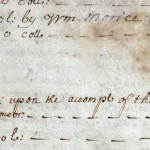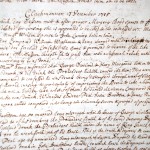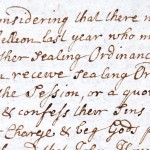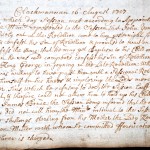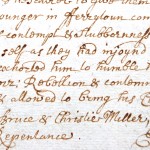This November is the 300th anniversary of the Battle of Sheriffmuir, part of the 1715 Jacobite rebellion. While the Jacobite rising of 1745 is well known and celebrated, the early events of 1715 are poorly understood and less recognised, mainly because they fizzled out with little long-term impact. The Jacobite cause has its origins in the religious wars of the 17th century, and the Glorious Revolution of 1688 that led to the replacement of the Catholic King James VIIth of Scotland (II of England) with his Protestant daughter Mary and her husband William, of Orange. The Union of the Parliaments in 1707 was also not popular across all of Scottish society. Following the deaths of William and Mary in 1702, Mary’s younger sister Anne succeeded to the Scottish and English thrones. Her death in 1714 and the prospect of a distant German Hanovarian successor taking the throne led to increased unease amongst many in Scotland.
John Erskine, Earl of Mar and standard-bearer for the Jacobite cause in Scotland saw this as the ideal time to mount a challenge to the English crown with a bid to re-establish a Stuart monarch on the throne of Scotland. To this end, he mustered Highland chieftains to his cause, and on the 6th September 1715, declared James Francis Edward Stuart, known as the ‘Old Pretender’, King of Scots. With an army of 12,000 men, Mar took Inverness, Gordon Castle, Aberdeen and Dundee. The main funding for the rising came from silver mines in the Ochil Hills. By October the Jacobite forces under the Earl of Mar were in control of most of Scotland north of the Forth. In order to progress further it was clear that they needed to take Stirling. The English government meanwhile sought to counter the potential uprising by dispatching a combination of Scottish and English regiments north under the command of the Duke of Argyll. During October, there were various manoeuvres by the Jacobite forces and skirmishes with Argyll’s men and this period of indecision on the part of the Earl of Mar allowed Argyll to consolidate his forces locally.
On the 10th November, the Earl of Mar took his full army south to march on Stirling Castle. The Duke of Argyll was soon informed of this development and he marched his forces to meet with his opponent. The Jacobite army outnumbered Argyll’s forces by three-to-one numbering around 4000 men and was camped to the north of Dunblane at Kinbuck, while the Government troops, numbering 1000, were in the town of Dunblane. Both armies sent scouts to the high ground on Sheriffmuir on the morning of 13th November and spotted each other. There then followed a series of hasty marches: the Government troops up the hill from Newton past Dykedale and the Jacobites from the North. Both armies lined up on roughly the location of the modern-day road to the Sheriffmuir Inn, which at the time was surrounded by boggy ground.
The Jacobites’ left flank was mired in the bog and was chased by the Government’s right flank back to Kinbuck, while the Jacobites’ right flank chased the Government’s left flank down to the Wharry Burn. Despite the Jacobite forces overwhelming numbers, the battle was inconclusive, with both sides claiming victory. However, in strategic terms, Argyll had halted the Jacobite advance. On the same day as the Battle of Sheriffmuir, Inverness surrendered to Hanoverian forces, and a smaller Jacobite force led by Mackintosh of Borlum was defeated at Preston The military expression of the Jacobite cause was to wait for 30 years for another chance to claim the Scottish throne.
There is evidence of local support for the Jacobite cause to be found in local Kirk Session records. On the day of the battle itself, a Sunday, Alva Parish Kirk failed to have a collection owing to the battle and this fact is recorded in the account book.
In Clackmannan Parish, several people were brought up in front of the Kirk Session for participating in the rebellion and fined for doing so. In this case, on the 13th December 1715 the Kirk is upbraiding George Scotland and Harry MacGoune citing the fact that they ‘were drunk & did drink the Pretender’s health’.
In December 1716, the Clackmannan Kirk Session makes it clear that they will not baptise the children of those known to have taken part in the uprising.
On 16th August 1717, the Kirk Session refused to baptise the child of John Younger unless he had appeared in front of the session and ‘confest his sin of Rebellion against God & against King George’. He is recorded as having refused to do so at that meeting but returned on the 20th August and ‘confest his sin of Rebellion & his sin of contempt & stubbornness against the Session in refusing to humble himself as they had injoyned him formerly’. He was told to ‘humble himself on his knees’, his repentance was accepted and the baptism went ahead.
It is interesting that the Church saw rebellion against the crown as a sin against God and gives an indication of Church sympathies at this time.
